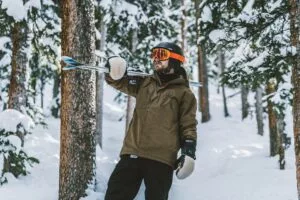
The Best Ski Jackets and Shells in Canada
Getting the most out of skiing, snowboarding, and many other winter pastimes often revolves around your gear. Staying warm, dry, and comfortable is generally important when doing anything outdoors, but this becomes more important in the winter. Knowing what to wear on the ski hill can be the difference between a memorable outing and one that you would like to forget. Above all other pieces of gear, the jacket, or upper layers you wear might do the most in terms of keeping your extremities warm and dry. When either shopping for an insulated jacket or a waterproof and windproof shell you can layer underneath, this guide will help you in the direction you are looking for.
Our top picks
Things to look for in a ski jacket or shell
These are a few factors that can help you decide what style of jacket you are looking for, and what important qualities you need in your next jacket.
Insulation
The insulation of your jacket will influence how much warmth the jacket will retain. Some skiers will look to shell type jackets, which eschew insulation to be lighter, windproof, waterproof, and better for layering with. If you want insulation, you will want to think about three different factors primarily: the quality of fill in your jacket, the amount of fill inside your jacket, and the type of fill.
The quality of the insulation is indicated by the “fill power”, a number that “represents the volume in cubic centimeters of a single gram of down, when fully lofted” or in other words, when fully fluffed up. This number will be in the hundreds, with 800-900 being rated as warm or optimal. Note that fill power is separate to the amount of fill in the jacket, and more fill with less fill power may be warmer than less fill of a higher fill power. Compare the amount of insulation with the fill-power of that insulation for a good idea to see how warm the jacket will be.
In terms of material, there are two that you should primarily look to. Synthetic materials are very common and offer a wide range of benefits – they have strong heat retention, even when damp, dries quickly, and is very easy to wash. The other material that is worth considering is goose down, which is very warm while being more lightweight than synthetic material but is more expensive and does not maintain its performance when wet. Also, goose down is non-vegan and there are concerns about how ethical down is.
Waterproofness
There are a number of numbers and stats that influence the degree of how waterproof something is. The material’s composition and density are big factors in developing a waterproof product.
Waterproof ratings are typically rated in mm. Below 1,500mm, these jackets will cap out at being “water resistant”– strong enough for light snow on the mountain in most cases. Above 1,500mm, these jackets are considered waterproof and should suffice, but according to ski and snowboard retailer Evo, “a minimum waterproof rating of 5,000mm for ski and snowboard jackets and pants,” is recommended. This rating will protect you from getting wet no matter the conditions, making it the ideal choice for all-day skiers and those not deterred by any weather conditions. If you are more a fair-weather skier or snowboarder, you can make do with waterproofness between 1,500mm and 5,000mm.
Ventilation
Insulation keeps us warm on the hill, but you will know if you’ve been skiing that some days are warm on the hill, and it is easy to break a sweat. When this happens, your clothes are going to get damp and you will not be a happy skier. Consider how well ventilated a ski jacket will be, and if there are ventilation pockets. A ventilation pocket can be opened up to improve airflow on warm days, dump heat from inside your jacket enclosure after building up body heat or stay zipped up to keep you fully warm on the colder days.
Pockets
Think about what you bring with you when you’re on the ski hill. Phone? Wallet? Vape? Then think about where you keep it all. While many jackets feel like they may have too many pockets these days, the versatility in storage options is undeniable.
I personally require large, fully zippered pockets to keep essential items like my phone and wallet, without the chance of losing them. I also prefer to look for a pocket dedicated for my ski ticket, as hanging the ski ticket by a zipper irritates me. Other pockets that you may need are interior pockets, sleeve pockets, chest pockets, or even pockets for your goggles.
Features
We were going to discuss all of the following features under the pocket section, but that did not sit right with us. Instead, we need to talk about the bonuses we like, since listing “this jacket has a powder skirt” will mean nothing to new skiers or snowboarders. So let’s talk about these features, starting with a powder skirt – a elastic liner that can keep snow from going up inside your jacket from below.
Some jackets include reflectors or other devices that allow location in the case you get stuck in an avalanche – every backcountry skier’s worst fear. Other features include adjustable hoods, and laminated waterproof zippers.
Price
Price is one of the biggest factors with any product reviews we write, and it is no surprise why. Jackets for skiing and snowboarding can be expensive, but the higher prices are for high-performing materials that you just cannot get for less. Materials like Gore-Tex and down are expensive by nature but provide very attractive properties for athletic garments for these winter sports.
However, do note that in-season prices and end-of-season prices may vary hugely. The ideal time to buy new gear for the next season is somewhat unfortunately at the end of the season, or right after the season ends. Keep this in mind when you go to shop for a new jacket.
The best budget jacket
Columbia Whilribird Interchange IV jacket
The budget choice of this list, the Columbia Whirlibird IV is a strong 3-in-1 jacket that is very versatile and warm. If you are looking for an everyday winter jacket, or a jacket for occasional trips to the mountains, the Columbia Whirlibird IV is a strong choice.
Like all 3-in-1 jackets, this jacket has two components – an insulated mid-layer with a hard shell, that can be worn together, or separated if the conditions call for it. Together, you get both insulation and the hard-shell weather protection you need in a complete ski jacket. Separately, you have the versatility to wear just the shell on a rainy day or the mid-layer on a chilly evening. Since this jacket is modular, you can also upgrade individual components, mixing and matching for conditions as you see fit.
The outer shell layer is constructed with Columbia’s Omni-Tech technology, which offers waterproof protection from the elements while having the air permeability to improve breathability of the nylon material that it is made from. The lining of the shell is made from 100% nylon 210T taffeta – a light, fast-drying, and durable material that is commonly used for work wear and winter garments.
The inner mid-layer utilizes Columbia’s Omni-Heat technology, a reflective lining made from 100% polyester, and is insulated with Thermarator 100% polyester.
The two layers together provide many features that make this a strong, yet budget, jacket for the ski hill. In terms of ventilation, the Whirlibird IV features zippered underarm venting. There are a wide range of pockets between the two layers: the inner mid-layer has just hand pockets, but the outer shell pocket has more, including zippered hand pockets, a zippered chest pocket, a goggle pocket, an interior security pocket, and a ski pass pocket. Many components of the jacket are adjustable, from the cuffs to the hem to the detachable hood. The powder skirt included is also adjustable as well.
Users overall really enjoy the versatility of this budget jacket. The jacket is lightweight, relatively warm (when the components are worn together) and movable. The women’s version of the coat might run small, especially around the bottom of the jacket, and some users found the opposite issue was true in men’s sizes. It’s hard to pinpoint a reason why this sizing discrepancy occurs, and so it appears at the most basic level that some sizes might be inconsistent.
However, users critiqued the zipper, stating this was a corner that Columbia has cut on the Whirlibird IV compared to previous versions. This zipper is less strong and more prone to failure, which is unfortunate for such an essential component of the jacket.
Pros
- Budget price.
- Solid outer shell combined with a dependable mid-layer provide versatile use.
- It has got a lot of pockets.
Cons
- Weather protection leaves something to be desired.
- The zipper is of lower quality.
- Boxy, somewhat unflattering appearance in most styles.
The best 3-in-1 jacket
The North Face ThermoBall ECO Snow Triclimate
Like all 3-in-1 jackets, the ThermoBall Eco Triclimate jacket from The North Face includes both a strong, weatherproof shell and an insulated mid-layer, which can be worn separately, or combined. For versatility on the hill without blowing too much at once, this jacket is a great choice.
First, the inner jacket mid-layer – a thin, puffy jacket loaded with recycled, synthetic ThermoBall insulation. With 11 g/ft² (grams per foot squared) of ThermoBall insulation crafted from post-consumer recycled Polyester – the inner layer of this jacket is dedicated to warmth, even if it gets damp. With two handwarmer pockets, this is a perfectly usable jacket independently when the weather is brisk or frosty – and it does not look half bad either.
The outer shell layer offers lots in terms of water and weather protection. Featuring a DryVent 2-layer shell made from 125D of 100% Nylon fabric, this jacket highly waterproof and windproof, keeping you warm and dry no matter what the conditions throw at you. Full tapered seams enhance the waterproof protection. Even the zippers are waterproof, protecting your valuables from the elements too.
The outer shell features a wide range of pockets and other features. For pockets, the outer layer features 2 zippered handwarmer pockets, 1 zippered exterior chest pocket, 1 zippered arm pocket (best to use for your ski pass) and an internal zippered pocket. The inner layer has two handwarmer pockets too. A powder skirt, and helmet-compatible hood really make this a strong choice for the ski hill. The inner and outer jackets can connect to each other, and even other compatible jackets from the North Face.
Overall, users like this North Face jacket for its warmth, waterproofness, and versatility. Whether separate or together, these layers can be used to great effect both on the hill or in your day-to-day. However, there were some things that people were not too fond of. Some users felt that the pockets were not suited for their use, requesting more inner pockets on both layers. The combined layers also leave something to be desired with how well this jacket ventilates, a few users found themselves overheating in the combined configuration during warmer days.
Pros
- Warm, synthetic mid-layer does a good job of insulating.
- Shell layer is very waterproof and weatherproof.
- Attractive appearance.
Cons
- When the layers are combined, the ventilation is lacking.
- Number of pockets could include more internal pockets, but this is admittedly a nitpick.
The best synthetic ski jacket
Helly Hansen Alpha LifaLoft Men’s / Aphelia LifaLoft Women’s
If you want a testament to how great the Helly Hansen Alpha Lifaloft Jacket is for skiing, it is the preferred choice by the Swedish Alpine Ski team. For an insulated jacket with strong protection from the elements, this Helly Hansen jacket is a great place to start looking.
Most people assume a winter jacket will naturally have both weatherproof protection and insulation, but in ski jackets, this is not always the case. Some skiers or snowboarders prefer to control the exact level of insulation they need by layering up, looking for a shell jacket only to protect from the elements. However, if you want both, one of these Helly Hansen LifaLoft jackets is a strong choice.
The shell is constructed from 85% Polyamide and up to 15% of Elastain; the lining is mostly 100% Polyester; and the LifaLoft insulation includes materials like Polypropylene, Polyester, and even some recycled Polyester. Helly Hansen packed this jacket with their LifaLoft insulation, improving both weight and warmth of this resort jacket.
Like most quality ski jackets, there is a wide range of additional features that make this well-equipped for the mountain. For starters, the pockets are a standard line up including dual hand warming pockets in the front, two zippered chest pockets (with a goggle shammy), an internal pocket, and a pocket for your ski pass. There are armpit zips to boost ventilation. The powder skirt detaches in cases where not necessary. The hood is adjustable, detachable, and helmet compatible. Overall, this jacket has the standard features necessary for a strong ski jacket.
Let’s rewind a bit to talk about the internal pocket for a second – while most of the time, we are happy to recommend a zippered pocket inside to protect your valuables, Helly Hansen take it up a notch with their Life Pocket+. This zippered pocket keeps the items inside up to three times warmer than traditional pockets, which can help keep your phone alive, even in the coldest conditions.
This jacket also includes some impressive safety features – particularly an advanced safety system from RECCO. This system consists of two components – first, a passive reflector that is carried by the user improves visibility if needed, and secondly, an active detector makes users easier to find. If you do serious back country skiing, these features can be really assuring, in case the conditions turn bad before you can return to safety.
Overall, users find this a very strong jacket. It has an incredible weatherproof and insulating performance, a slew of advanced features other companies are not offering, and is super lightweight and comfortable.
However, the downside to a jacket with so much insulation is those days you do not need any insulation. You can undo the ventilation zips, sure, but you can’t ditch a layer. It makes sense why many skiers and snowboarders seem to gravitate towards layering. However, if you have gear in mind when the temps creep around 0 Celsius, there’s really not much I can say against this jacket
Pros
- Excellent waterproof and weatherproof performance
- Warm insulation
- Life Pocket and Life Pocket Plus improve your phone’s battery on the mountain.
- RECCO safety system
Cons
- Can be overheat on those warm days on the mountain.
The best shell jacket
Arc’teryx Rush
For dedicated back country use, the Arc’teryx Rush is a powerful hard shell perfect for the conditions while being supremely lightweight.
The Arc’teryx Rush stands up to the elements so well due to its utilization of GORE-TEX PRO – the company’s current strongest formulation of the iconic material, which the company guarantees will keep you dry. This material also is impressively impervious to wind yet is completely breathable.
The tight weave of GORE-TEX makes it completely waterproof and able to break the wind yet is loose enough to let water vapor from sweat dissipate out. The face fabric has a durable thickness of 80 denier. With such strong attributes, you almost expect a hard, rigid material, but the Arc’teryx Rush is both lightweight and flexible. With micro seams to reduce the overall bulk of the jacket, this is a jacket truly designed for athletic performance. Keep in mind this is a shell jacket and features no insulation.
This jacket has all of the features necessary for ski touring or hardcore all-weather skiing too. Pit zips are included for quick ventilation when the day or skier get warm. The zippers are all waterproofed, keeping you and your possessions, drier all day. In terms of pockets, you get a zippered hand pocket in the front, an internal chest pocket with a laminated zip, and internal mesh pocket, and sleeve pocket ideal for ski passes and ID cards. There is a powder skirt, as well the capability to attach to specific Arc’teryx ski pants to prevent snow getting in.
Like the more high-end jackets in this guide, the Arc’teryx Rush includes a hidden reflector from RECCO, which allows for easier detection in the worst-case scenario skiing in avalanche country. We still recommend avoiding areas prone to avalanche, and taking extra preparation if you do plan on skiing in the back country.
Users seemed to be seriously impressed by the build quality of this jacket. Users describe the build quality as “bombproof” and “bulletproof,” noting the overall durability of this shell. Gore-Tex is always going to provide top notch water protection, and this jacket is no different. Gore-Tex is also going to command a larger price tag, and this jacket is no different there either. While there are many impressive features with this jacket’s build quality and performance on the hill, it is $100 dollars more than the Arc’teryx Sabre AR Jacket, and it’s hard to say if this jacket is that much better.
Pros
- Extremely windproof and waterproof.
- Extremely durable.
- Avalanche rescue features from RECCO.
Cons
- Very expensive.
The most weatherproof shell
Arc’teryx Sabre AR Gore
Arc’teryx is a name with quite the reputation for sports wear. The north Vancouver design company has a commanding presence for it’s incredible gear, for outdoor wear to climbing – to these ski-jackets. If you want a truly impressive shell-type jacket for all types of skiing and snowboarding – look no further than these jackets. The Sabre and Sentinel are similar enough for us to list them together.
The Arc’teryx Sabre and Sentinel are spiritual siblings, offering the same specs and materials for different fitting jackets. Both the Sabre and Sentinel are designed for resort skiing to “slackcountry” exploration. These Arc’teryx jackets feature a GORE-TEX construction, which contributes durability, breathability, and waterproofness to the shell. With a 3L 70-denier face fabric, this shell can take everything that was thrown at it. The back is slightly insulated too with flannel, although the word “slightly” needs emphasis.
While the actual build of the jacket makes it a strong option for skiers and snowboarders alike, the features designed for convenience on the hill. Long underarm vents improve the ventilation when the temperatures rise or you work up a sweat. With zippered hand pockets, internal pockets with laminated zips, and internal mesh pocket, and an easily accessible sleeve pocket allows you to put your ski pass, or even documents like ID, within reach when they would be inconvenient to access in other pockets, there is a good amount of storage throughout this jacket.
The adjustable storm hood can fit overtop your helmet, with a brim designed to keep precipitation out of your eyes. The collar offers similar, thoughtful protection, with a taller construction and a microsuede chin guard to keep your face similarly clear of snow. Most of the other hems, cuffs, and features including the powder skirt, are similarly adjustable. Micro seams prove both durable and lightweight. The construction is designed to provide complete freedom of movement.
Arc’teryx really thought hard about what features people will want from their jackets on resort terrain or beyond. Hidden Recco reflectors allow easier location by rescue crews if necessary, combining with your other avalanche gear to keep you safe on backcountry terrain.
Pros
- Excellent weather and water protection.
- Highly adjustable features.
- RECCO system help detection by rescue crews.
Cons
- Very expensive.
Best backcountry shell
Outdoor Research Skytour AscentShell
If you are a hardcore alpinist, you need hardcore gear. Weather you enjoy hitting the back country or want a hard-shell jacket that you can wear no matter the conditions, the Outdoor Research SkyTour AscentShell is an excellent choice.
With Outdoor Research’s AscentShell technology, this is an impressive hard-shell jacket. With a flexible, three-layered shell where the waterproof layer is sandwiched between two layers of more durable fabrics. This jacket is supremely waterproof and windproof, beading water like it is nothing and keeping bitter winter winds off your torso. Not only does this jacket live up to what a hard shell is supposed to do but does it while heavily breathable and well ventilated as well.
With a wide range of features that improve the skiing experience, you can tell that the people of Outdoor Research put a lot of thought and care into designing this jacket. We have mentioned the jacket was well ventilated prior, but this is in part to the ventilation zips located near the armpits, which allow you to adjust between warmth and ventilation and adapt to the weather of the hill.
A wide range of pockets including two chest pockets, two exterior hand pockets, interior chest pocket and a goggle mesh pocket line both the inside and the outside of the jacket. The hood features a wire inside the brim, allowing to shape the hood to easily fit your helmet and stay in place.
Users overall find this hard shell a great option for more advanced alpinists and others who demand the most weatherproof performance from their outer layer. Users really seem to like how this jacket fits, feels, and protects from the elements. Some users were not wowed by the designs however, feeling as if they are not colourful or interesting enough, but in terms of performance, there was little in the way of criticism leveled at this jacket. While it is a pretty penny, it is actually inexpensive comparatively to other hard-shells designed for alpine sport.
Pros
- Strong 3L waterproof performance.
- Not as expensive as some other performance shells.
- Wide range of pockets.
Cons
- Not particularly stylish.
Best light shell
Outdoor Research Carbide
If you are looking to upgrade your ski jacket for an intense winter of all sorts of skiing in all sorts of conditions, a shell like this one from Outdoor Research is a solid choice. The Outdoor Research Carbide provides a decent waterproof and windproof shell that pairs well with most mid-layers, while not being ridiculously prohibitively expensive for all but the most invested ski gurus.
The Outdoor Research Carbide is a pure shell jacket meaning it has no insulation, but provides weather and water protection, so you can layer according to the day’s forecast. The 3-layer Pertex Shield fabric that Outdoor Research uses on the Carbide jacket provides ample water and wind protection. Underarm zippered venting lets you control the degree of ventilation you need. The lightweight feel of the jacket makes this awesome for layering or when the forecast approaches zero degrees Celsius.
However, at only 40-denier, the shell layer of this jacket is on the thin-side – one of the main detractors of this jacket. Some users have suggested the thinness of the jacket detracts from its longevity, and at only 40-denier, it is realistic that falling hard or catching a rogue branch could cause some damage to the jacket.
There are many added features that are thoughtfully included to make this an even better performing ski-jacket. YKK Aquaguard zippers protect both you and your possessions from water seeping in through the zippers.
Overall, users find this to be a solid shell for the mountains that is somewhere in the mid-range in terms of dedicated ski gear. Users really enjoy how this jacket can protect users from the elements while being very breathable and well-ventilated. However, some users do not seem happy with the thinness of this jacket – however, keep in mind that this jacket is supposed to be uninsulated. Some users have complained of the jacket running slightly on the small side, but generally it fits well enough.
Pros
- Strong waterproof and windproof construction.
- Extremely breathable.
- Strong zippers.
Cons
- Too thin for real durability.
Our methodology
When researching ski jackets on this list, we realized that there are many things that skiers and snowboarders are looking for. Regardless on what type of jacket you are looking for, weather protection and water protection are essential factors.
No matter what conditions you will ski in, you will be surrounded by ice and snow, and no matter what conditions you ski in, getting wet in your gear will be uncomfortable. The ability that your gear will be able to keep moisture and the wind off you (or warm you regardless of being wet or not) is essential.
We put over 15 hours of research in crafting this list. We meticulously read through the specs of our prospective jackets, read reviews from trusted product review sites, and read through countless user reviews. We only considered products with an average review of 4 stars or higher, to ensure our users are only looking at quality products.
Frequently Asked Questions
Where to buy ski jackets?
While you can get winter coats at a wide range of stores that sell outerwear, if you are looking to hit the hills frequently, we suggest looking to outdoor sports stores like Sportschek, Atmosphere, MEC or Cabelas to source your jacket. The reason being is the materials and build quality needed to be comfortable on the hill are not often found in cheaper jackets found at large stores like Walmart.
You can also source many ski jackets online, looking to the above sport store’s websites or Amazon.
How to wash a winter jacket?
In the washing machine. Likely, your winter jacket will be machine washable, with exceptions. Check the tag on your washing machine and follow any manufacturer’s instructions.
What size ski jacket should I get?
Ski jackets have a wide range of fits between different brands and models, even within the same size. Between the same size of jackets, you can find slim fit, regular fit, and loose fit jackets, all of which will fit totally differently.
So, what size ski jacket should you choose? It comes down to your size, your fit preference, and your layering habits. Ideally, you get a jacket in your typical size (or size relative to how the jacket fits), that has a fit that is as slim or loose as you like. The looser, the more layers you can put on underneath.
When do ski jackets go on sale?
Ski jackets will go on sale around the end of the season, usually, sometime between March and May.
What are soft shell jackets? What are hard shell jackets?
Shell jackets are jackets without insulation, providing waterproof and weatherproof protection. The types of shell usually refer to the texture and feel of the shell, and to a lesser degree, how waterproof the shells are.
Soft shell jackets are more flexible and breathable, providing water-resistance, but typically are short of being completely waterproof. Hard shell have a different texture typically, but have the most weather protection, including full waterproof protection. Because of how tightly woven the fabrics are in hard-shell jackets, they are also highly durable. For more, Arc’teryx has a strong article on this.
Read more

The Best Thermal Shirts in Canada
A thermal shirt is one of the bests ways to stay warm during the cold weather.

The Best Ski Goggles in Canada
Keep your face warm and improve your visibility on the mountain with these pairs of ski goggles.

The Best Balaclavas and Neck Gaiters in Canada
Whether looking for a balaclava or a neck gaiter, we got the best for the ski hill.

The Best Ski Gloves & Mittens in Canada
When you ski, are your fingers cold? Keep your digits warm with these gloves and mittens.
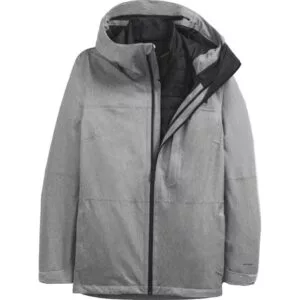
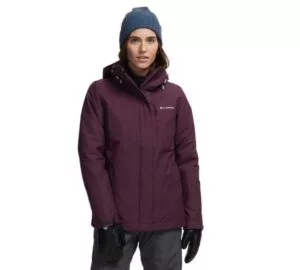
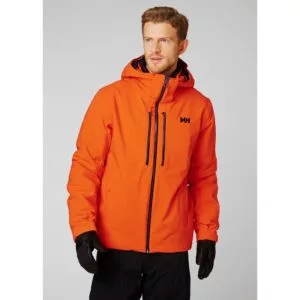
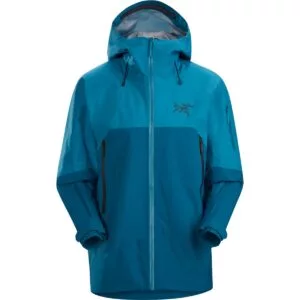
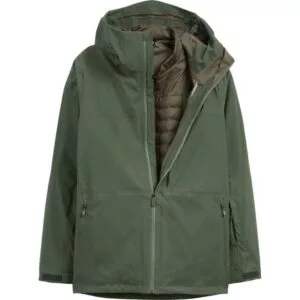
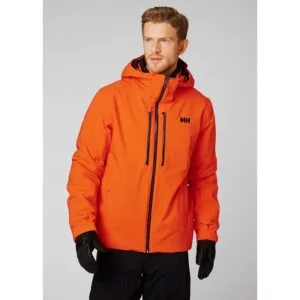
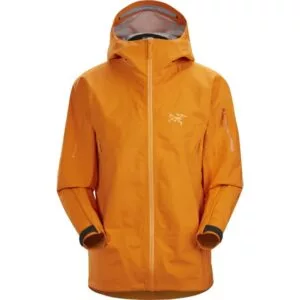
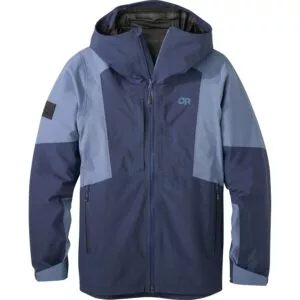
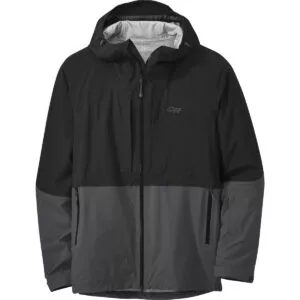
antihistamine generic names alternatives to allergy pills allergy pills without antihistamine